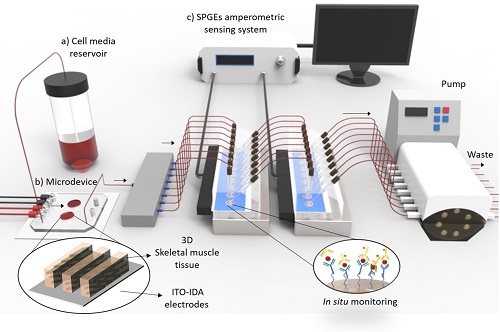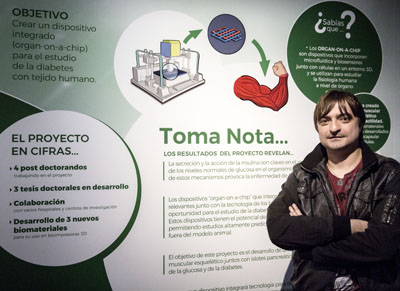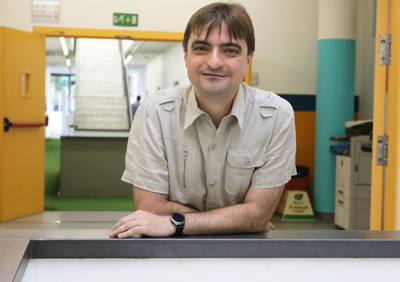Researchers at IBEC develop a bioengineering platform to detect pro-inflammatory molecules in muscular disorders
The Biosensors for bioengineering group led by Javier Ramón has developed a sensing platform for the in-situ detection of tissue-secreted pro-inflammatory molecules, the so-called cytokines. This new methodology opens a new door in the understanding of metabolic-disorders such those found in muscular diseases, as well as the development of drug-screening applications.
Although 40% of total body mass is skeletal muscle tissue, there is no specialized clinical doctor for the treatment of muscular diseases, according to the American Medical Association. The research group of Dr. Javier Ramón at IBEC works to fill this gap between muscle disorders and ad hoc therapies.



